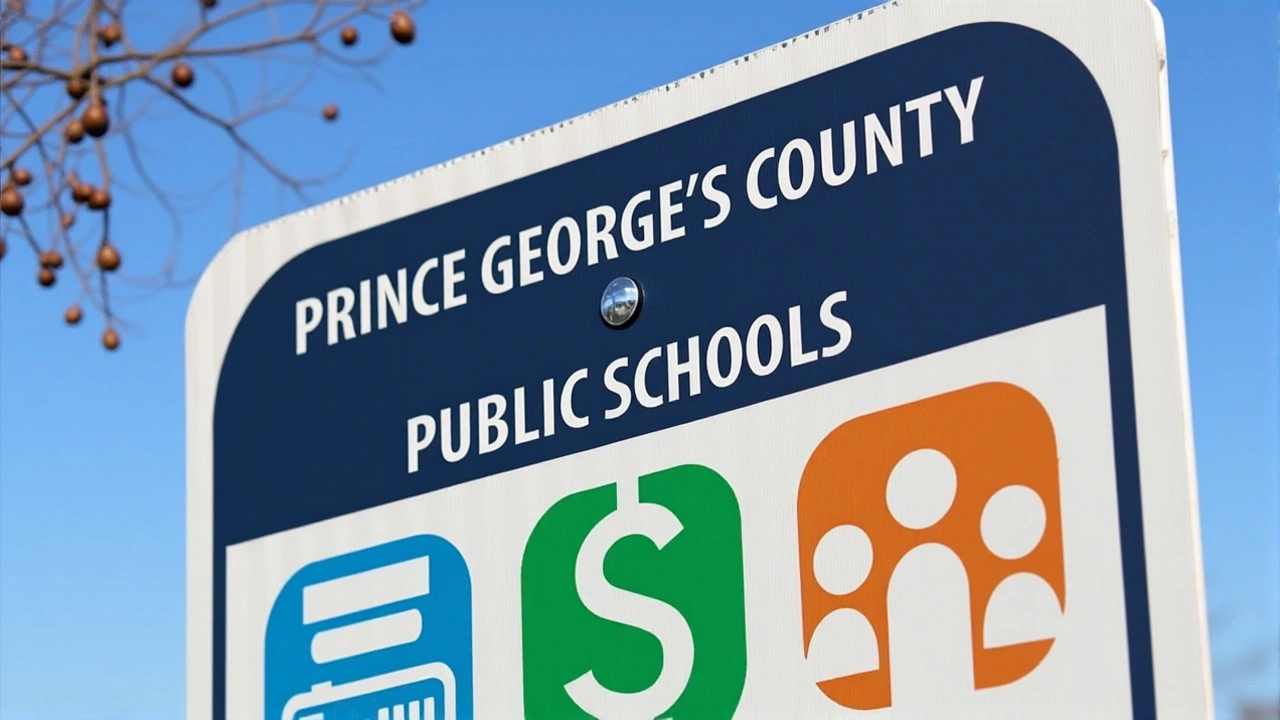By the 2026-2027 school year, every public high school in Prince George's County, Maryland, will offer tuition-free college courses — no bus ride, no application fee, no bill. On November 19, 2025, Prince George's County Public Schools (PGCPS), Prince George's Community College (PGCC), County Executive Aisha Braveboy, and the Prince George's County Council announced a sweeping expansion of the Dual in the Schools (DITS) program, bringing college-level coursework directly into all 25 comprehensive high schools. The move, backed by exactly $3 million from Maryland’s Blueprint for Maryland’s Future initiative, isn’t just ambitious — it’s a quiet revolution in how public education serves low-income students who’ve long been shut out of higher education opportunities.
From Five to Twenty-Five: The Roadmap to Universal Access
Right now, only five high schools offer DITS courses. This year, that number jumps to nine. By fall 2026, every single high school in the county — from Crossland High School in Landover to Bowie High School and beyond — will have at least one college course embedded in its schedule. The courses? Core subjects: English, math, science, and social studies. Taught during the regular school day. By PGCPS teachers who’ve earned adjunct professor status at PGCC. No student leaves campus. No parent pays a cent.The numbers tell the story: roughly 6,000 students are currently eligible, and when full rollout hits, that number climbs to nearly every junior and senior in the district — over 135,000 students total. The goal? To erase the financial and logistical barriers that have made community college feel like a distant dream for many. "This helps answer the questions of how they’ll get there and how they’ll pay for it," said O'Marie Barnes, a senior at Crossland High and the 2025-2026 Student Member of the State Board of Education. "It’s not just about saving money. It’s about saving time."
Why This Matters More Than Just Tuition Savings
A $3 million investment might sound big — until you add up what it saves families. The average community college course costs $300–$500 per credit. A typical dual-credit class is worth three credits. That’s $900–$1,500 per course. Multiply that by four or five courses over two years? We’re talking $4,500 to $7,500 per student. That’s a full semester of tuition, gone. For families living paycheck to paycheck, that’s not a savings — it’s a lifeline.But the real win isn’t just the money. It’s confidence. "I really enjoy the math and the building, the hands-on experience," said Madison Lumpkin, a junior at Crossland who wants to be a mechanical engineer. "I didn’t think I could do college-level work until I took this class. Now I know I can."
That’s the hidden ripple. Students who complete even one college course in high school are 30% more likely to enroll in college afterward, according to the National Center for Education Statistics. For Black and Latino students in Prince George’s County — who make up the vast majority of the district’s population — that’s not just a statistic. It’s a pipeline.

Teachers as Bridge Builders
What makes this program sustainable isn’t just funding — it’s the people. More than 100 PGCPS teachers have volunteered to take on extra certification through PGCC to become adjunct professors. They’re not leaving their classrooms. They’re upgrading them. One teacher told me she spent her summer attending workshops on college-level grading standards. "I used to teach to the test," she said. "Now I’m teaching to the future."It’s a quiet transformation. No headlines. No rallies. Just educators showing up, learning new skills, and saying: "Your child belongs here."
Countering the National Tide
This expansion doesn’t happen in a vacuum. While federal funding for Pell Grants and student aid has stalled — and in some cases, been rolled back — Prince George’s County is building its own safety net. County Council Chair Edward Burroughs III didn’t mince words: "Public education is under attack by the Trump administration as it continues to eliminate grants and federal programs that help Black and Brown students. Expanding DITS was a top priority for me because it’s needed now more than ever."It’s a defiant counterpoint to national trends. While other states cut dual-enrollment budgets, Maryland’s Blueprint — passed in 2021 — is quietly funding local innovation. And Prince George’s County is taking full advantage. The county’s leadership isn’t waiting for Washington. They’re creating their own model.

What Comes Next?
By 2027, the program will be fully operational. But the work doesn’t stop there. PGCPS and PGCC are already planning next-phase expansions: adding career-technical courses in cybersecurity, nursing, and automotive technology. They’re exploring partnerships with local businesses to create paid internships for students who complete the program. And they’re tracking graduates — not just for college enrollment, but for degree completion."We’re not just giving students a head start," said Interim Superintendent Dr. Shawn Joseph. "We’re building a bridge to one of the Four E’s — employed, enrolled, enlisted, or an entrepreneur. And we’re making sure every student can cross it."
That’s the quiet power of this initiative. It doesn’t promise miracles. It just removes the obstacles. And sometimes, that’s all it takes.
Frequently Asked Questions
How does this program save students money on college?
Students earn up to 12 college credits tuition-free before graduating high school. At an average cost of $300–$500 per credit, that’s $3,600–$6,000 saved. For many families, that’s enough to cover a full semester of tuition at a public university. Credits transfer to most Maryland public colleges and many private institutions nationwide.
Who qualifies for the Dual in the Schools program?
All juniors and seniors in Prince George’s County Public Schools are eligible, regardless of GPA or income. There are no entrance exams. The only requirement is enrollment in a participating high school. The program intentionally avoids gatekeeping — it’s designed to reach students who might otherwise never consider college due to financial or academic barriers.
How are high school teachers qualified to teach college courses?
PGCPS teachers complete a rigorous certification process through Prince George's Community College, including graduate-level coursework in pedagogy and subject mastery. Once certified, they’re appointed as PGCC adjunct professors with full academic standing. Their syllabi, grading, and assessments are reviewed by PGCC faculty to ensure college-level rigor.
What happens if a student doesn’t pass the college course?
Students receive both a high school grade and a college grade. If they fail the college portion, they still earn high school credit — but not college credit. There’s no financial penalty, and students can retake the course later. The goal isn’t to punish, but to prepare. Many students who initially struggle end up thriving after gaining confidence in a supportive environment.
How does this compare to other dual-enrollment programs in Maryland?
Most dual-enrollment programs require students to travel to community college campuses, often during after-school hours. Prince George’s County’s DITS program eliminates transportation and scheduling barriers by bringing college courses directly into high schools. It’s also one of the few programs in the state funded entirely by state Blueprint dollars — not local or federal grants — making it more stable and scalable.
Is this program available to private or charter school students?
Currently, no. The program is funded through PGCPS and state Blueprint allocations, which are restricted to public school districts. However, county officials are exploring pilot partnerships with select charter schools in 2026. The focus remains on equity — ensuring the students who need it most, particularly those in under-resourced neighborhoods, get first access.

Written by Lucan Silvers
View all posts by: Lucan Silvers